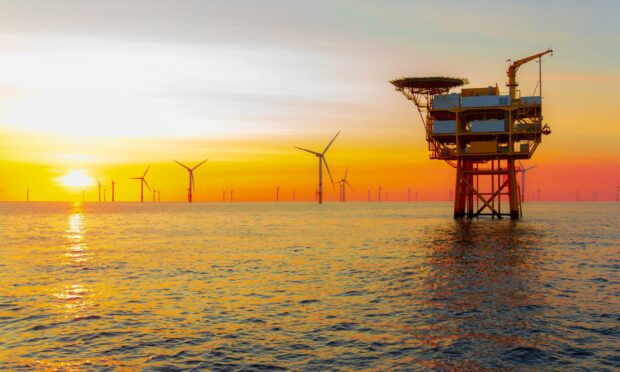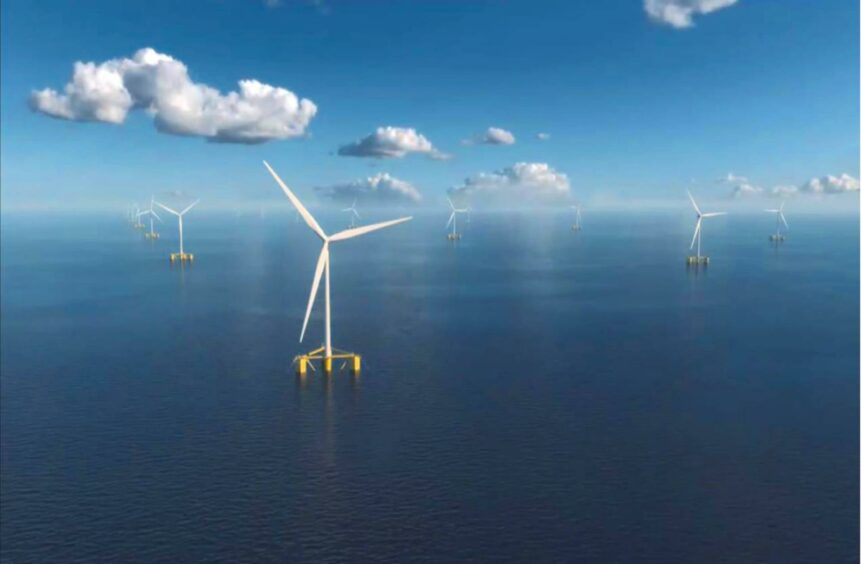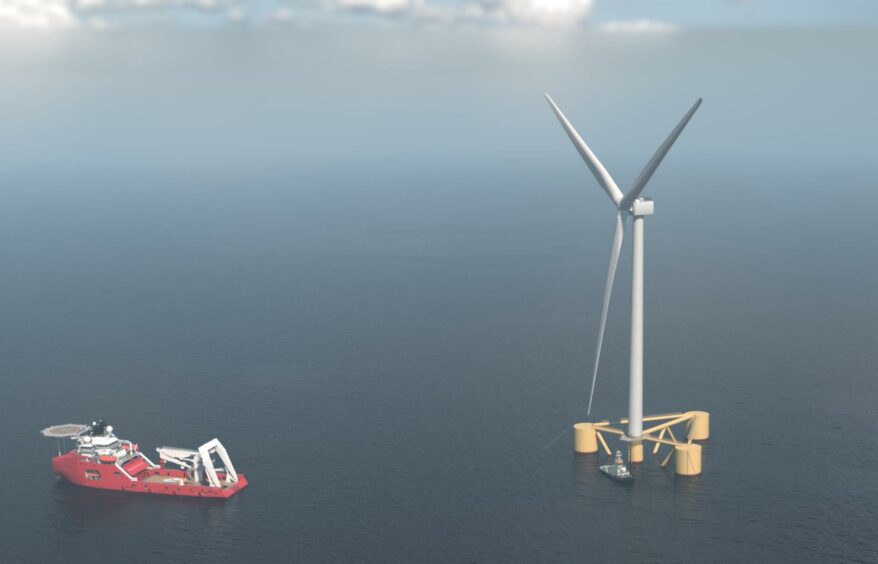A bidding window is looming for offshore wind projects to power oil and gas platforms in the North Sea.
The ScotWind-style auction is expected to kick off in June for developers to apply for the rights to build a mix of small-scale wind projects, of less than 100 megawatts, to power oil and gas installations as well as larger projects.
Bidders taking part in Crown Estate Scotland’s Innovation and Targeted Oil and Gas (Intog) scheme will include green energy and infrastructure developer Cerulean Winds.
According to Dan Jackson, London-based Cerulean’s founding director, the wider energy transition is “complicated” and requires “honesty and reasoned debate”.
Balancing act
Mr Jackson added: “It’s not simply a case of switching off oil and gas and moving to renewables.
“We must balance how we meet energy demand, now and in the future, with the increasing urgency to achieve net-zero, while bolstering security of supply.”
He continued: “The Russian invasion of Ukraine, coupled with soaring energy prices which were already going to be a factor even before the conflict began, fast-tracked concern over our domestic energy security and supply to the head of the queue of concerns surrounding the whole energy transition story.
‘Change of mindset’
“That has to a large extent created a change of mindset, reinforced by the UK Government’s new energy security strategy.
“There is still a commitment to bring about a green industrial revolution but also a shift in understanding that this can’t happen overnight.
“It will take time, investment and ingenuity to deliver what we need, and that’s triggered a rethink on domestic oil and gas production, at least in the short term.”
Mr Jackson said a “blended” strategy that includes oil and gas will be “crucial” for lowering energy costs for consumers, while protecting security of supply and “reducing our reliance on imports from other countries”.
And he warned any ramping up of domestic oil and gas production must go hand-in-hand with an acceleration of decarbonisation to make the fossil fuel industry “a more palatable partner” within the overall energy mix and “the net-zero targets we are striving to achieve”.
There is still a commitment to bring about a green industrial revolution.”
Mr Jackson said: “New oil and gas exploration licences should come with strings attached, and those should be that carbon abatement and electrification are part of their story right from the outset.
“The North Sea Transition Deal, agreed by both the UK and Scottish governments with the backing and engagement of the oil and gas industry itself, commits us to ambitious targets to electrify and decarbonise production.
“Through Crown Estate Scotland’s Intog leasing round, with a specific focus on using offshore wind to decarbonise oil and gas production, we are hopeful a further 5.7 gigawatts (GW) of clean energy can be added to the potential 25GW the recent ScotWind leasing awards will generate.
“As one of the Intog bidders, Cerulean Winds is already engaging widely with oil and gas operators, and it is clear there is an appetite for a basin-wide scheme such as ours.”
Cerulean aims to use floating offshore wind to decarbonise North Sea assets that are currently producing an estimated 18 million tonnes of CO2 emissions every year.
Mr Jackson added: “Our project represents over £10 billion of private investment in a single strategic infrastructure project with no requirement for government subsidies.
“It has the potential to bring in more than £300 million in direct government revenue via leases and taxation through to 2030.
“The proposal would abate 20m tonnes of CO2 per annum created by offshore production, from 2027.
“To put the impact of that into perspective, the abatement of 20m tonnes of CO2 is equivalent to removing the annual carbon footprint of Scotland’s entire population.”
Net-zero within six years?
Set against a baseline of 2018, government targets call for a 10% reduction in UK North Sea offshore emissions by 2025, 25% by 2027 and 50% by 2030, with a goal of achieving net-zero by 2050.
The Scottish Government goes even further with a target of net-zero emissions by 2045.
Cerulean claimed its proposal could end UK North Sea offshore emissions within six years.
Mr Jackson added: “It will support a just energy transition, creating jobs and opportunities in the UK supply chain. Local content is crucial.
“Intog will be implemented ahead of ScotWind and if done correctly, will develop the Scottish supply chain for the far bigger ScotWind.
“Combined, Intog and ScotWind present unprecedented opportunities on which the oil and gas supply chain can capitalise, from the extensive fabrication required to the design, manufacture and installation of specialist equipment and technology.
“We are already working with prime contractors so that, if our proposals for Intog get the green light in the summer, we are able to deliver at pace and at scale.”
Supply chain facing ‘unprecedented’ demand
This pace and scale needs to be replicated in the supply chain, where investment and strategic support are required to rapidly build capacity to meet what will be an unprecedented demand, particularly in fabrication, where the UK “lags behind many other countries”, he said.
Done successfully, every major oil and gas basin will follow what Scotland is achieving.”
He added: “This is one of the reasons we welcomed the MoU (memorandum of understanding) between our contractors, NOV and Lamprell, whose expertise and investment in transforming the UK’s fabrication capabilities will be key to unlocking local content.
“Decarbonising the UKCS (UK continental shelf) oil and gas sector is the biggest single decarbonisation project undertaken by the UK to date.
“All eyes will be on Scotland as the world looks to learn from this holistic approach.
“Done successfully, every major oil and gas basin will follow what Scotland is achieving.”




Conversation